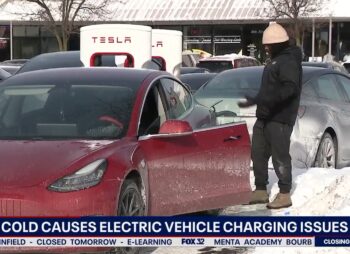
She said regardless of attempts by Republicans and other entities fighting to block the plan won’t make a bit of difference as the EPA has a “track record of winning these lawsuits and will win again.” She must have missed the Supreme Court ruling telling the EPA to redo its overly strict regulations. She also told the AP that “it’s going to be the law of the land and it’s going to last.” Other states and some groups are suing the EPA over the Clean Power Plan, which even McCarthy admitted in Congressional testimony would not avert temperatures from rising and was largely a symbolic gesture ahead of the Paris Climate Talks.
Currently, Congress is voting to repeal the Clean Power Plan, which takes aim at coal-powered plants, not to mention the tens of thousands of new regulations the EPA has issued just in the last few years. In fact, the EPA has unveiled so many new regulations targeting coal-fired power plants that many have simply shut down since revamping each plant to meet the new regulations would be an economic disaster. Some of the regulations want them to use technology that doesn’t even exist except in the minds of pie-in-the-sky environmentalists.
The regulations have also turned many coal-producing states like West Virginia into desolate wastelands with an employment-to-population rate hovering at 49.3 percent (Oct 2015). The troubles that have hit West Virginia are “the result of less demand for coal nationally and mining only makes up a small fraction of coal jobs.” This gives West Virginia the distinction of being the “only state where less than half of all civilians work.” West Virginia also has 17.6 percent of working-age people collecting disability benefits, and the fourth highest median age (according to the last Census Bureau data from 2013).
Because the unemployment rate only looks at those who are actively looking for work, it doesn’t calculate or consider the number of people who have given up looking and who are no longer collecting unemployment benefits. This means the labor department shows West Virginia’s unemployment rate at 6.9 percent (it rose one percent in only the last ten months). The employment-to-population rate is a better indicator of how Obama’s Clean Power Plan is negatively affecting coal-producing states, coming in at 49.3 percent.
Another indicator of America’s actual unemployment rate is how many people are collecting food stamps (Supplemental Nutrition Assistance Program or SNAP). As of Oct 2015, 46 million people were getting government subsidies to purchase food. That doesn’t include Child and Adult Care Food Program, the Summer Food Service Program, Special Supplemental Nutrition Program (WIC), Commodity Supplemental Food Program, Food Distribution Program on Indian Reservations, or actual entitlement dollars (cash benefits).
All of this has fallen on deaf ears in the tone-deaf Obama administration, and the presumptive Democratic nominee Hillary Clinton, who wants to roll out a $30 billion plan to help communities that have suffered the most from the EPA’s heavy-handed crackdown on cheap, abundant coal. “The 20th century energy system is not coming back,” Hillary wrote in a politically expedient op-ed last month. She believes that the United States will be a world-leader in clean, renewable offerings. All while leaving the coal-producing states in the dustbin of U.S. history.
Clinton’s billion-dollar plan would ensure “retirees in coal communities receive the benefits they were promised and the assistance they need, improve the infrastructure and government resources in coal communities, and it would provide grants to stimulate private investment.” In other words, she would be Obama’s third-term doppelg√§nger. Coal-fired power plants currently provide one-third of U.S. power consumption, and its use has fallen 25 percent since Obama took office. More plants are expected to close. Most Republican presidential candidates have promised to repeal the Clean Power Plan and rein in the EPA’s largesse.
In 2008, Obama told the San Francisco Chronicle’s editorial board that if if somebody wants to build a coal-fired power plant, it “will bankrupt” them as he’s going to institute pricing on CO2 emissions. He also said in the same interview that under his administration, “electricity rates would necessarily skyrocket,” regardless of whether they burn coal, oil, or natural gas. Any plant that emits CO2, Obama said, “whatever the industry was, they would have to retrofit their operations. That will cost money. They will pass that money on to consumers.”
Congress effectively squashed Obama’s cap-and-trade (pricing CO2 emissions) program, much to the chagrin of global-warming gadfly Al Gore. After the 2010 elections, Republicans gained control of the House, and in 2012, the Senate, essentially putting a giant stop sign on the lawn of the White House. Undeterred by what the voters wanted, Obama’s ambitious goal of redoing America’s energy infrastructure, and avoiding Congress in the process, came to fruition in the guise of the spick-and-span-sounding Clean Power Plan. And he needed a regulatory agency that could supplant congressional rules. Enter the McCarthy-era.
Once the EPA denoted the trace gas carbon dioxide as a pollutant (most compounds and elements, including oxygen, when used in excess will cause negative side effects), Obama shuttered so many coal-fired power plants that he created a wasteland of employment opportunities for coal-producing (and using) states. One unexpected consequence of all these coal plants being closed is that many states have met the Clean Power Plan’s onerous goals simply by closing the plant and declaring bankruptcy.
















